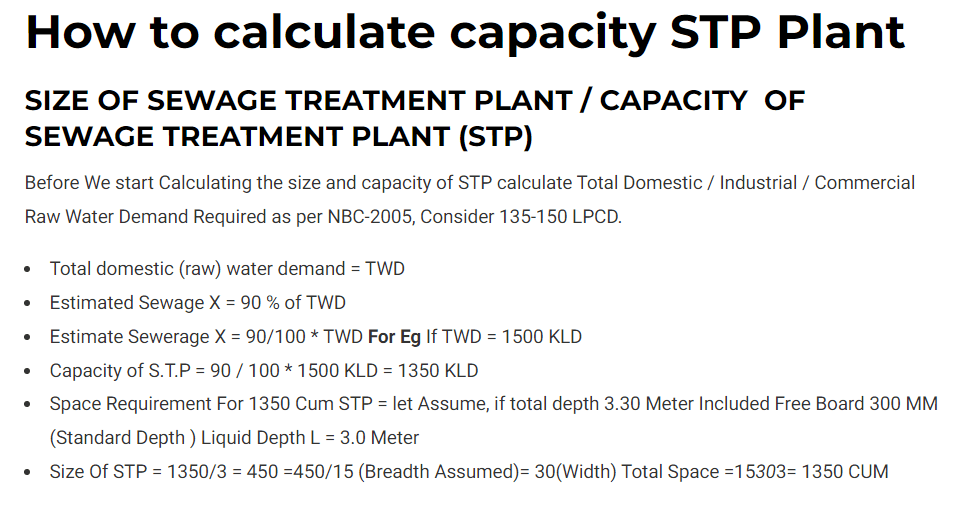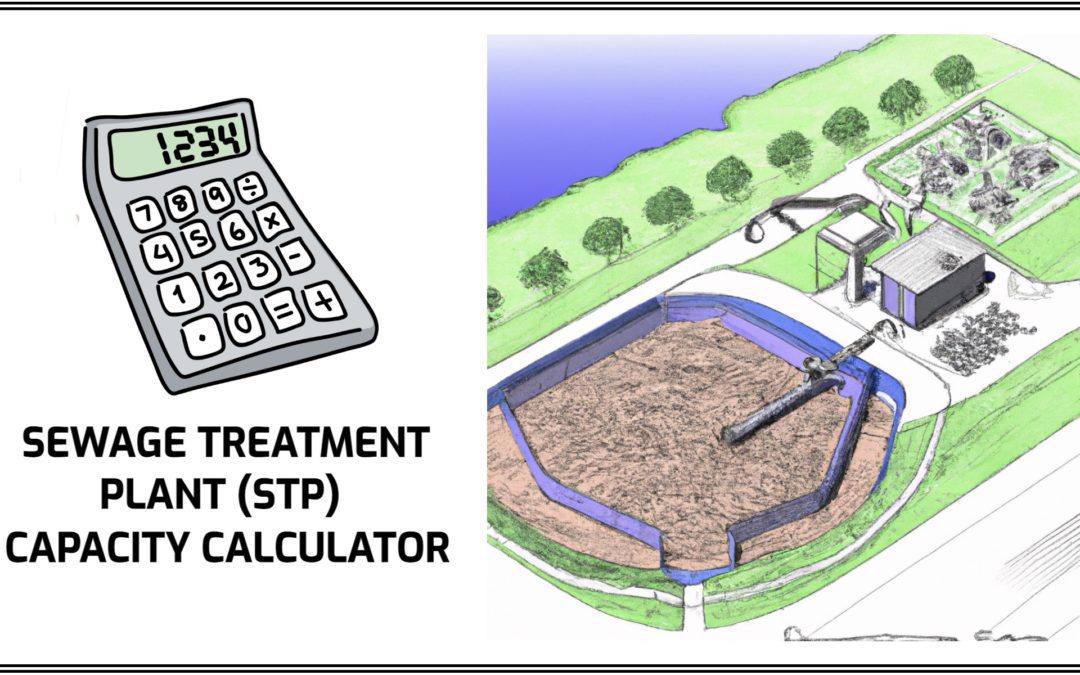STP Capacity Calculator Introduction
Sewage treatment plants play a vital role in managing and purifying wastewater before it is released back into the environment. One critical aspect of designing an effective sewage treatment plant is determining the appropriate capacity to handle the incoming wastewater flow. In this article, we will delve into the world of sewage treatment plant capacity calculation and how to use our stp capacity calculator, exploring the essential formulas and considerations that every STP Buyer should know.
Table of Contents
Understanding Sewage Treatment Plant Capacity:
Sewage treatment plant capacity refers to the maximum volume of wastewater a plant can handle within a given timeframe. This capacity must be carefully calculated to ensure optimal performance and prevent overload, which can result in inadequate treatment and environmental concerns.
Formulas for Sewage Treatment Plant Capacity Calculation:
To determine the capacity of a sewage treatment plant, several key factors need to be considered. Here are the fundamental formulas used in the calculation process:
Population Equivalent (PE):
The population equivalent (PE) is a measure used to estimate the average organic load generated by individuals or industries. It provides a standardized basis for comparing and designing sewage treatment plants. The formula for calculating the population equivalent is:
PE = (Q × BOD5) / (P × C)
Where:
- Q is the average daily flow of wastewater in cubic meters per day (m³/d)
- BOD5 is the five-day biochemical oxygen demand of wastewater in kilograms per day (kg/d)
- P is the per capita BOD5 production rate in kilograms per day per person (kg/d/person)
- C is the concentration of BOD5 in the wastewater in milligrams per liter (mg/L)
Design Flow:
The design flow represents the peak expected wastewater flow rate that the treatment plant should be able to handle. It is crucial for determining the plant’s capacity. The design flow is often calculated using a combination of population data, water usage patterns, and other relevant factors. Additionally, factors like industrial discharge, infiltration, and inflow should be considered to ensure accurate calculations.
Retention Time:
Retention time refers to the duration that wastewater remains in the treatment plant for effective treatment. It is calculated by dividing the volume of the treatment tank by the average flow rate. The formula is:
Retention Time = Tank Volume / Average Flow Rate
Considerations for Sewage Treatment Plant Capacity Calculation:
While the formulas above provide a starting point for sewage treatment plant capacity calculation, it is essential to consider the following factors to ensure accurate results:
- Future Population Growth: Anticipating future population growth is crucial to avoid the need for plant expansion shortly after construction. Consider demographic projections and plan for potential increases in wastewater flow.
- Industrial Wastewater: If the treatment plant will handle industrial wastewater, additional capacity must be allocated to account for the unique characteristics and higher pollutant concentrations associated with industrial effluents.
- Infiltration and Inflow: Infiltration refers to groundwater seeping into the sewer system, while inflow refers to storm-water entering the system through improper connections. Both infiltration and inflow can significantly impact the flow rates and should be accounted for in capacity calculations.
- Regulatory Requirements: Ensure compliance with local regulations and standards governing sewage treatment plant capacity, discharge limits, and environmental considerations.
How to Calculate the Capacity of an STP

How to Calculate the Cost of an STP

Conclusion:
Determining the appropriate capacity for a sewage treatment plant is a critical task for SEO experts involved in wastewater management. By using formulas such as population equivalent, design flow, and retention time, one can accurately calculate the capacity needed to handle wastewater flow. Considering factors like future population growth, industrial wastewater, infiltration and inflow, and regulatory requirements is vital for an effective sewage treatment plant design. By conducting thorough calculations and addressing these considerations, SEO experts can contribute to the creation of sustainable and efficient sewage treatment
KSPCB STP Guidelines Document

KSPCB Latest Acts & Rules

KSPCB Latest Notifications & Circulars








